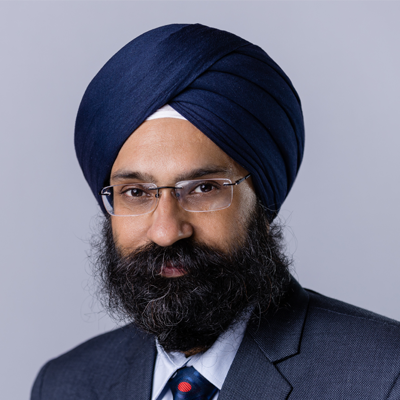
Cancer in My Community is a Cancer.Net Blog series that shows the global impact of cancer and how people work to care for people with cancer in their region. Dr. Navneet Singh is a thoracic medical oncologist and pulmonologist at the Postgraduate Institute of Medical Education and Research in Chandigarh, India. His primary area of clinical expertise and research is non-small cell lung cancer. You can follow him on Twitter.
Why I care for people with cancer
More than a decade ago, a void existed in thoracic oncology services being offered at my medical institute in India. Therefore, I spent my first years at the lung cancer clinic standardizing and streamlining our procedures to deliver high-quality care. Patients who seek treatment at our clinic often travel great distances. It provides them and me great satisfaction when I give them the time they need, despite the big crowd of other patients waiting outside my outpatient room.
It also gives me great satisfaction when patients can be treated with minimal side effects and they experience both relief in their symptoms as well as successful treatment. For many people, especially those with metastatic lung cancer, a complete cure is not possible; however, for several of these patients, targeted therapy may be possible. On occasions, I’ve had patients brought into the clinic in a wheelchair, and after targeted treatments, they have walked into their follow-up appointments on their own, smiling and without help. This is one of the things that makes my day. That’s why our clinic aims to provide molecular testing for genetic changes, called mutations, in the EGFR and ALK genes whenever it is indicated.
What the cancer experience is like in India
In India, the ratio of patients seeking health care to the availability of qualified health care providers, especially doctors and nurses, is high compared to developed countries. The result is overcrowded health care facilities and long waiting periods in outpatient clinics. People with cancer encounter this even more often as there are not enough trained oncologists available to help everyone in need.
I work in a government-funded referral center in the north of India that serves patients from several neighboring states. As I mentioned earlier, people often come a very long way to my center for a diagnostic evaluation as well as cancer treatment. This is because several of the diagnostic and treatment facilities needed for cancer care may not be routinely available where they live. This is especially true for those living in rural areas, where access to specialized care means traveling for a few hours.
Specialized cancer care is important for many reasons, including avoiding a misdiagnosis. For example, tuberculosis and lung cancer symptoms overlap, as do several of their findings on chest x-rays and CT scans. In India, where tuberculosis is common, patients with limited access to experienced health care providers may get treated first with tuberculosis drugs before a diagnosis of lung cancer is ultimately made. Greater awareness about lung cancer and the approach needed to establish its diagnosis is gradually helping reduce the percentage of patients in whom this misdiagnosis occurs.
Another limitation in India is the availability of certain diagnostic and treatment options that may have been introduced in developed countries a few years ago. Precision medicine has witnessed rapid advances in recent years, such as highly focused radiation therapy techniques, immunotherapies, monoclonal antibodies, and many more. All of these therapies are expensive, and their introduction to many people in India will require financial help from both government and nongovernment organizations.
How the Indian government is working to improve access to cancer care
In most developed countries, most health care expenses, including cancer treatment, are borne by insurance purchased by patients or offered by the federal government. In India, patients typically end up paying for the treatment from their own savings. However, the central government recently started a universal health care insurance program in which all eligible citizens get access to free health care, including chemotherapy and supportive medications.
This program is likely to increase the number of people from very poor socioeconomic classes who will receive cancer treatment. In addition, special funds are also available from India’s central government and several of its state governments for people with cancer, especially those with limited income and low socioeconomic status.
The importance of patient advocacy in India
Patient advocacy is an area that needs greater effort and coordination in India. The importance of providing people with cancer education about their disease and empowering them cannot be overemphasized. Approximately half the patients at our lung cancer center are diagnosed with metastatic disease and have an expected life span of a few months. It’s important that they are guided and informed about the treatment options that may be available for them. Developed countries in North America and Europe can help developing countries like India in the area of patient support groups and advocacy platforms.
In my lung cancer clinic, we developed a printed instruction sheet for people to read after chemotherapy to help inform them. In addition, we wrote a patient information booklet in English and translated it into 2 local Indian languages. All patients, at the time of diagnosis, receive this free booklet to help them understand their disease and treatment. We also created a multidisciplinary thoracic oncology team with doctors from different departments involved in lung cancer care, so that patients can get the best information and care possible.
